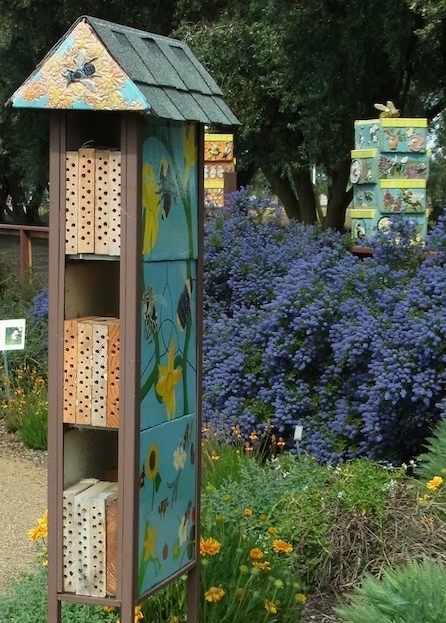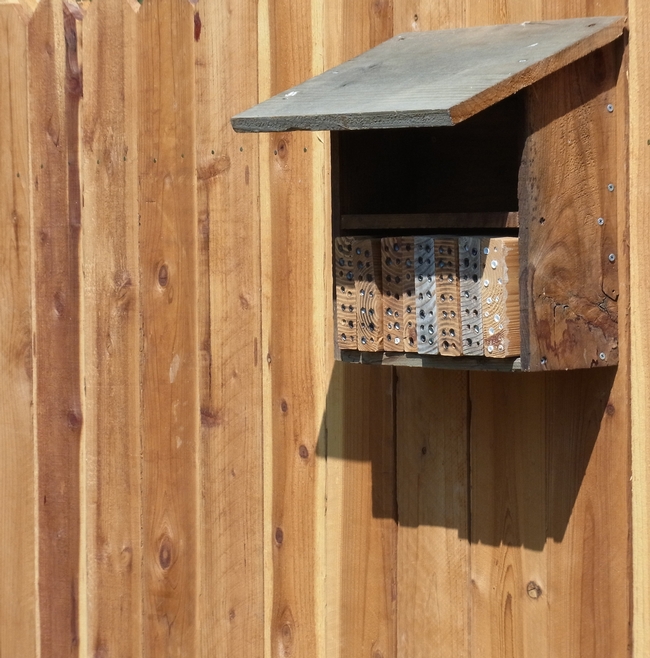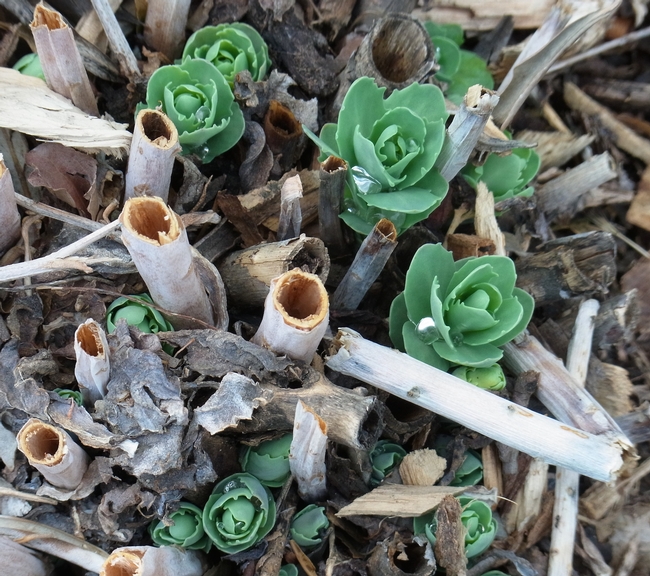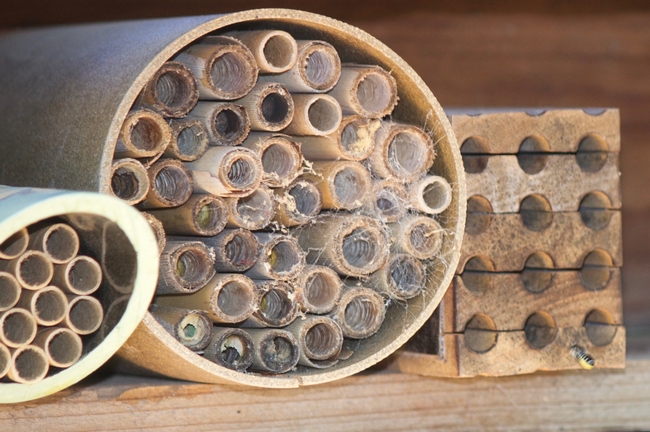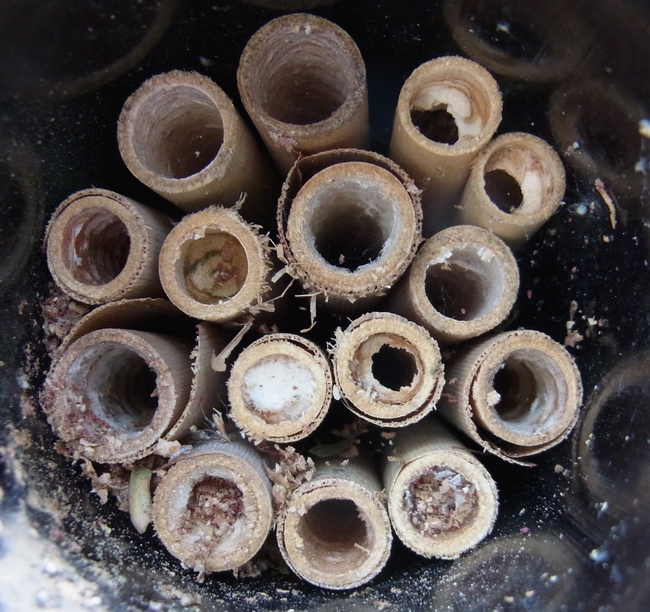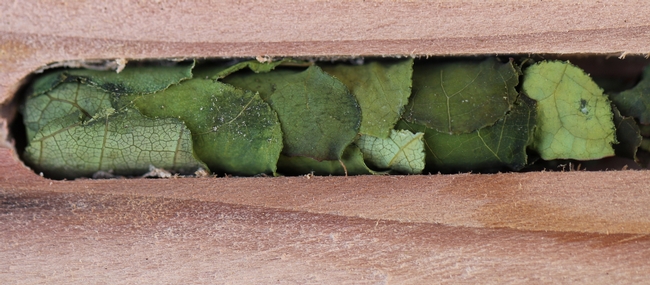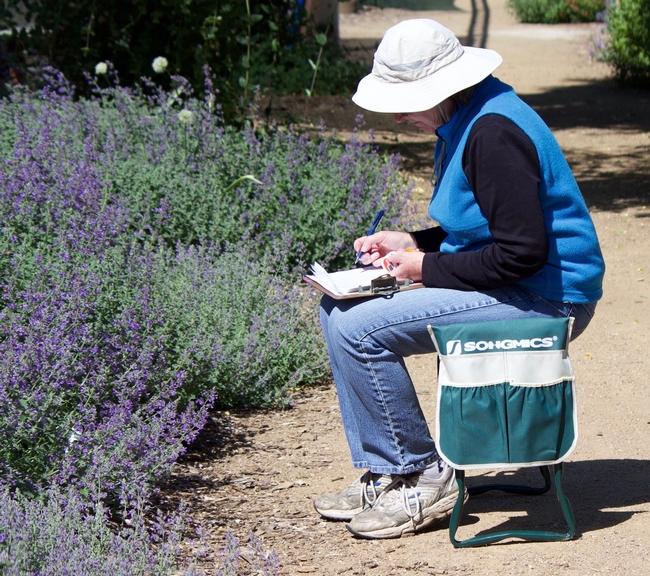We've all seen them....garden catalogs or magazine articles with cute little bee houses hanging like birdfeeders, or entire fences made of nesting tubes for solitary bees. We even had them at the Haven -- for a while -- in the form of bee condos. The only problem? They often don't work, and may even do more harm than good.
Multiple nesting blocks are often grouped together in so-called 'bee hotels'. This is a higher density of nests than would be found together in the wild and can lead to increased disease spread.
This is not limited to bee houses; previous investigation by Mihail Garbuzov and Francis Ratnieks of the University of Sussex found similar misinformation surrounding bee plant lists. They reviewed lists published for various regions worldwide, and found large variation in recommended plants, even within the same region. The science behind the lists, such as university research or repeated monitoring by trained observers, was also often unclear.
So what's a conscientious bee gardener to do?
Bee houses
I've written extensively about solitary bee houses on this blog. In the wild, bees nest in abandoned beetle galleries in trees. This environment is dark, stationary, and made of wood, and can inform our choice of solitary bee housing. Consider the following:
1. Bees will use a nesting tube diameter that corresponds to their body size. A good range of sizes for common bees is 3/16 to 5/16 inch. Tubes should be 4 to 6 inches deep; anything shorter will produce predominantly male bees.
2. Bees will not use houses or nesting blocks that move or are open in the back
3. A shaded entrance is important; even a piece of burlap draped over the top of the nest can work
4. Bee houses constructed of wood seem to be preferred
5. Position house with entrance out of the prevailing wind
6. Pathogens can build up in bee houses as they are used; they cannot be sterilized with bleach or other disinfectants. 'Cleaning' the used nesting tube with a drill bit or brush is likely to push pathogens into the wood. Houses (in the case of wood blocks) or individual tubes should be replaced after they are used.
7. Consider all dimensions. Bees may nest in hollow stems that are not horizontal.
Bee nesting blocks on a fence. Note the solid back and overhand providing shade. Some of the holes are filled with paper straws that allow the block to be cleaned and reused.
Sedum 'Autumn Joy' showing hollow stems after fall pruning. These may be used by solitary bees the following spring.
Nesting blocks in use with Megachile apicalis (small bee on lower right) returning to her nest. Note the full load of pollen being carried on her abdomen.
Nesting tubes in use. Note that tubes are filled with different material depending on the bee species. Materials include leaf pieces, leaf hairs, and bits of decomposed granite. Tubes on the upper right with chewed holes have been exited by newly emerged bees.
Leafcutter bee nest cross section. Each segment is an individual egg and food provision. The different shape of the front and back of the segment helps the emerging bee to orient itself to the correct direction for exit.
A fact sheet about building and using solitary bee houses is here.
Bee garden plant selection
Citizen science bee monitoring at the Haven. Regular monitoring of bee use of plants by trained observers ensures our plant recommendations are sound.
